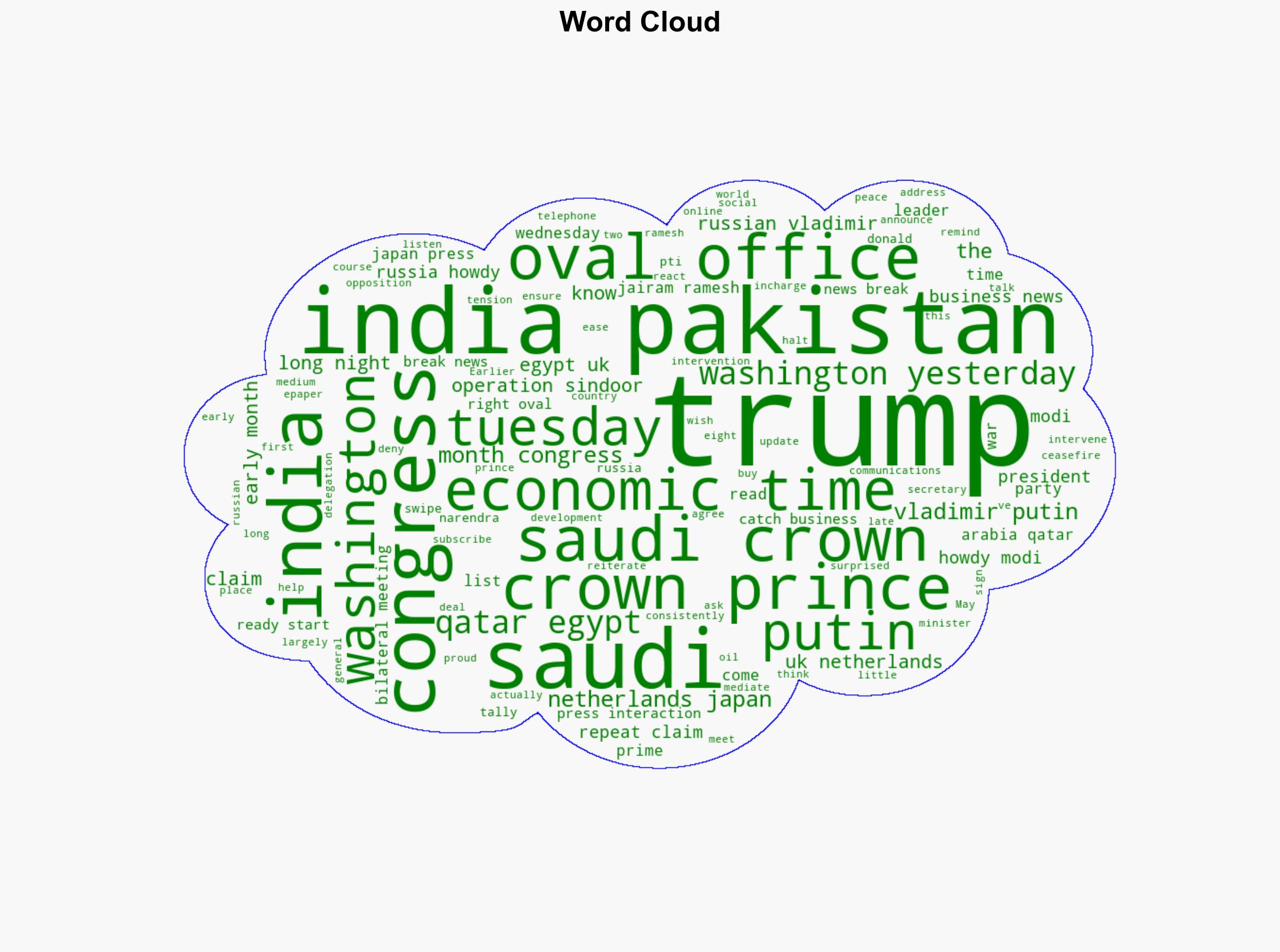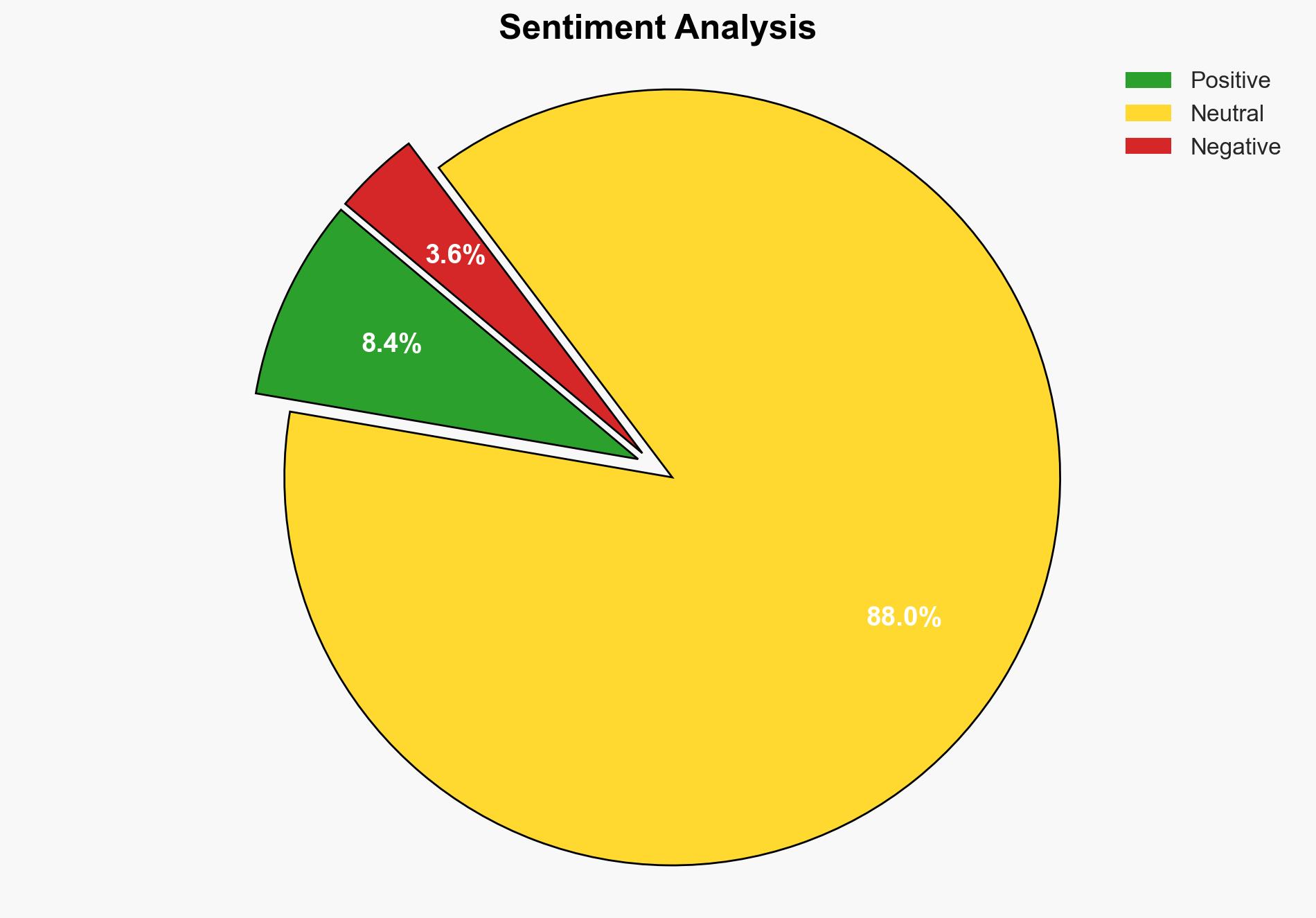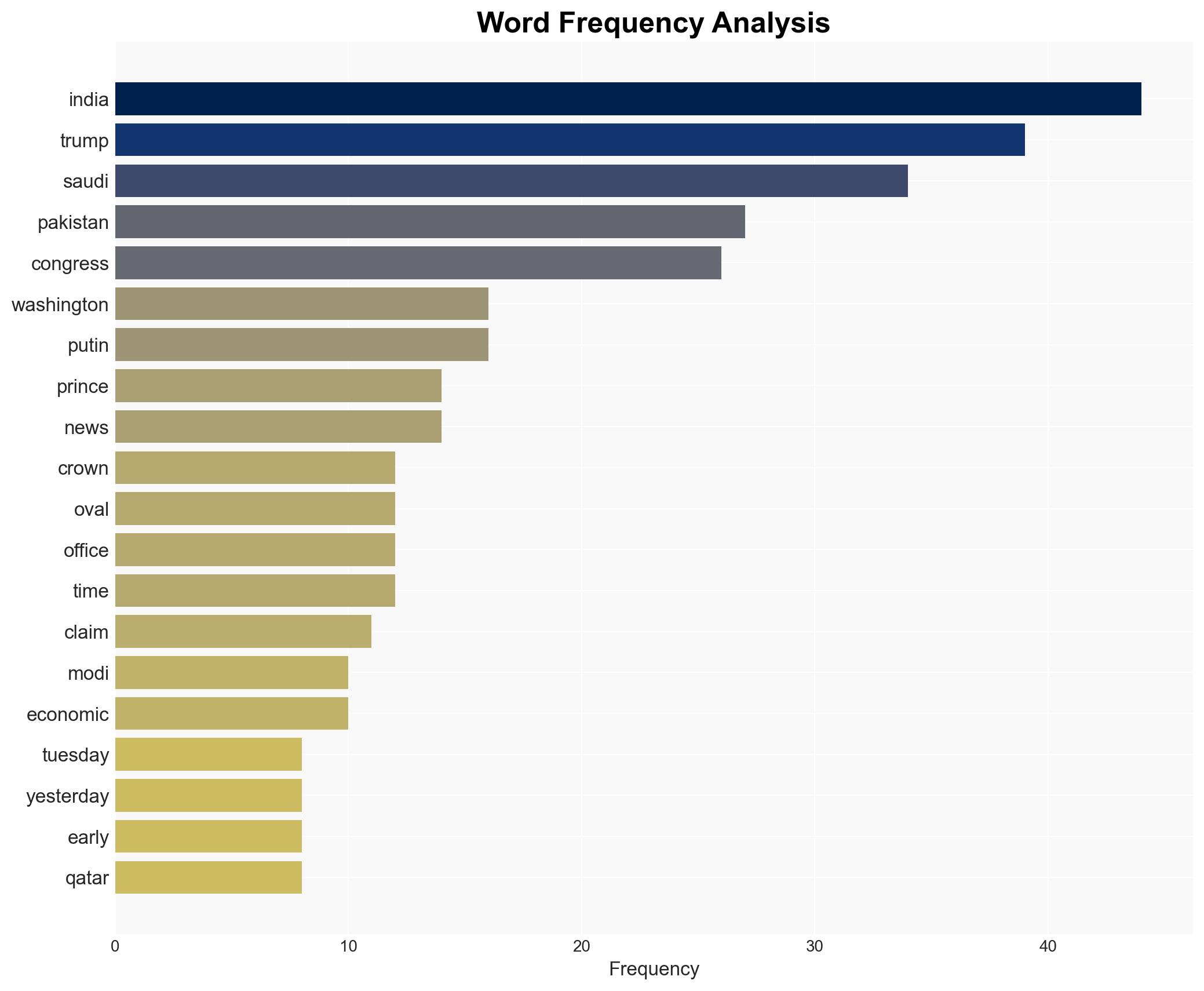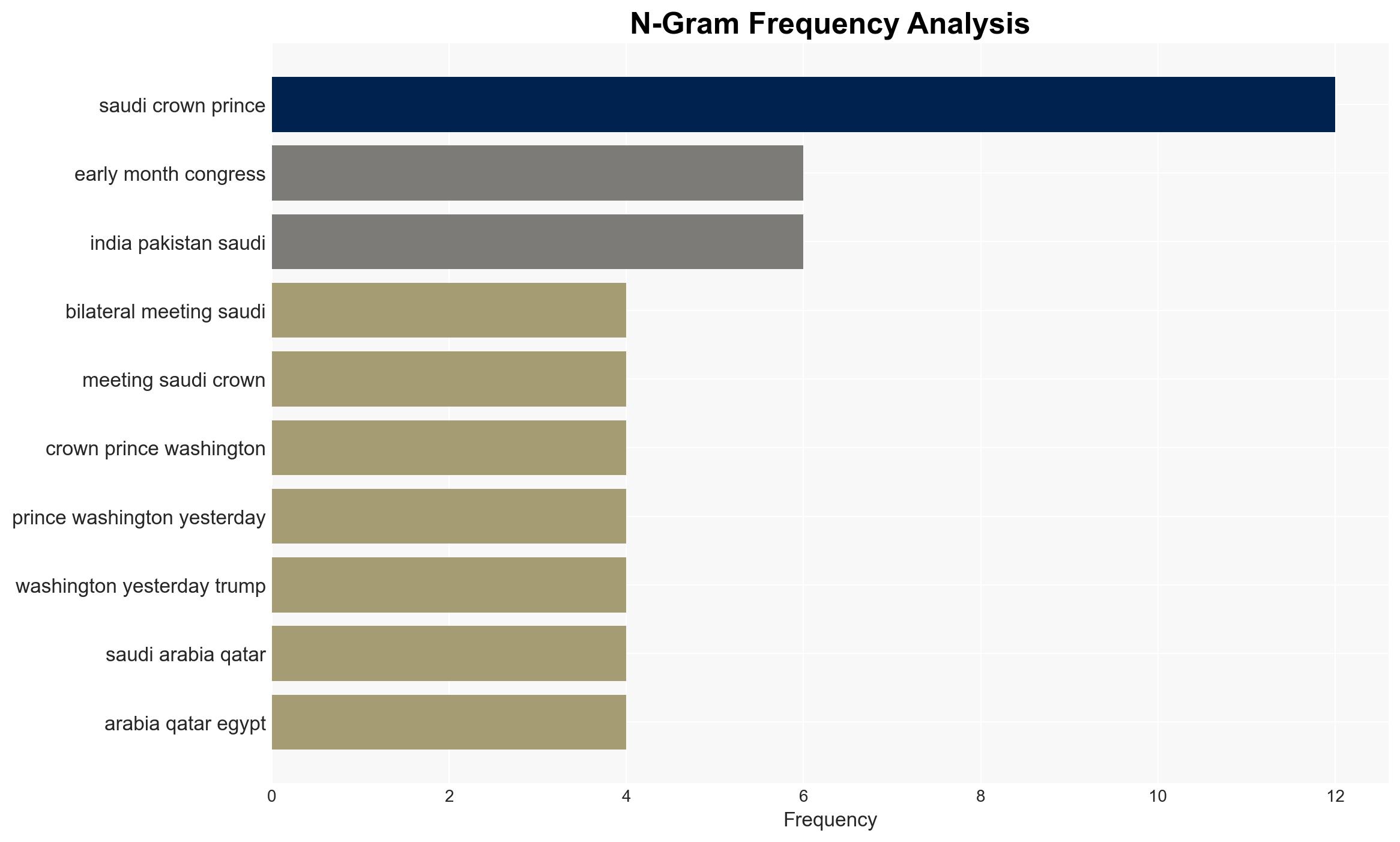‘Tally is now 60’ Congress after Trump repeats ‘India-Pak’ peace broker claim – The Times of India
Published on: 2025-11-19
AI-powered OSINT brief from verified open sources. Automated NLP signal extraction with human verification. See our Methodology and Why WorldWideWatchers.
Intelligence Report:
1. BLUF (Bottom Line Up Front)
With moderate confidence, the most supported hypothesis is that President Trump’s repeated claims of mediating peace between India and Pakistan are primarily aimed at enhancing his diplomatic legacy rather than reflecting actual involvement in conflict resolution. The strategic recommendation is to monitor the reactions of both Indian and Pakistani governments to assess any shifts in their diplomatic stances or policies that might indicate a change in the regional power dynamics.
2. Competing Hypotheses
Hypothesis 1: President Trump’s claims of mediating peace between India and Pakistan are genuine and reflect behind-the-scenes diplomatic efforts that have not been publicly acknowledged by the involved parties.
Hypothesis 2: President Trump’s statements are primarily rhetorical, aimed at bolstering his image as a global peacemaker without substantial evidence of actual mediation efforts.
Hypothesis 2 is more likely due to the consistent denials from India regarding any external mediation and the lack of corroborating evidence from other involved parties or international observers.
3. Key Assumptions and Red Flags
Assumptions: It is assumed that official statements from India and Pakistan accurately reflect their diplomatic engagements. Additionally, it is assumed that any significant mediation efforts would be acknowledged by multiple parties.
Red Flags: The lack of acknowledgment from India and Pakistan, combined with the absence of independent verification, raises questions about the veracity of Trump’s claims. The timing of these statements, coinciding with domestic political events, suggests potential ulterior motives.
4. Implications and Strategic Risks
The primary risk is the potential for misinformation to influence public perception and diplomatic relations. If Trump’s claims are perceived as credible, they could lead to increased tensions between India and Pakistan, especially if one party feels misrepresented. Additionally, repeated claims without evidence could damage U.S. credibility in international diplomacy.
5. Recommendations and Outlook
- Monitor official communications from India, Pakistan, and the U.S. for any changes in diplomatic language or policy shifts.
- Engage with regional experts to assess the impact of these claims on local perceptions and media narratives.
- Best-case scenario: The claims are dismissed without significant impact on regional relations.
- Worst-case scenario: Misinterpretation of the claims leads to heightened tensions or diplomatic fallout.
- Most-likely scenario: The claims are largely ignored by the involved parties, with minimal impact on the ground.
6. Key Individuals and Entities
Donald Trump, Narendra Modi, Jairam Ramesh, Vladimir Putin, Saudi Crown Prince.
7. Thematic Tags
Regional Focus, Regional Focus: South Asia, U.S. Foreign Policy, Diplomatic Relations
Structured Analytic Techniques Applied
- Causal Layered Analysis (CLA): Analyze events across surface happenings, systems, worldviews, and myths.
- Cross-Impact Simulation: Model ripple effects across neighboring states, conflicts, or economic dependencies.
- Scenario Generation: Explore divergent futures under varying assumptions to identify plausible paths.
Explore more:
Regional Focus Briefs ·
Daily Summary ·
Support us





